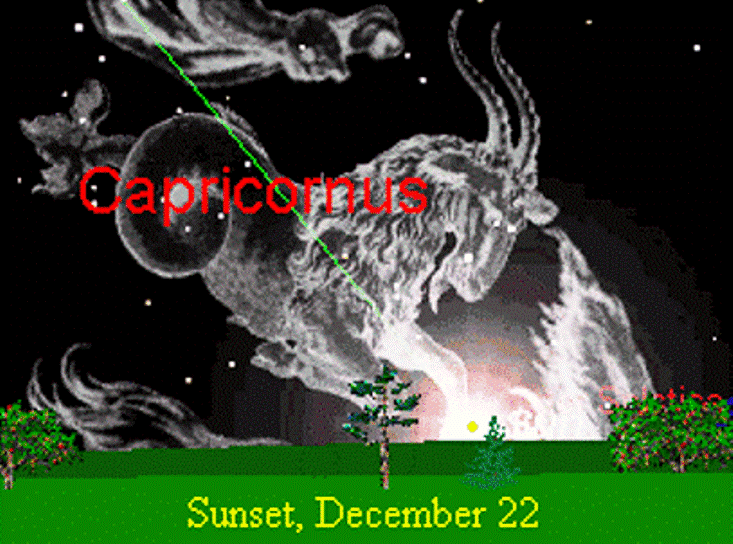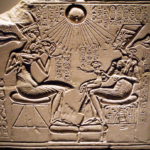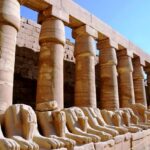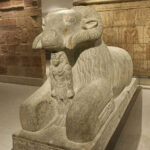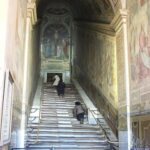“You say we worship the sun; so do you.” (Tertullian (160-230), Early Christian Theologian)
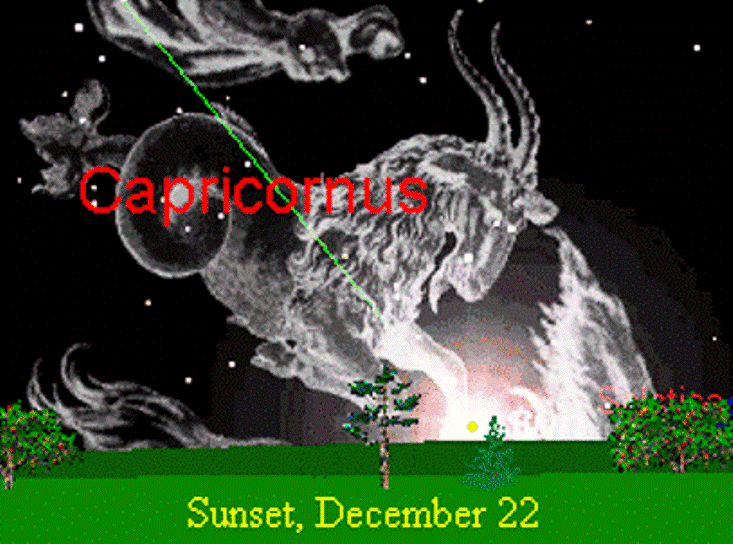
(This is the second part of the article examining the Astrological roots of Christianity. Readers are advised to read the first part before proceeding with this part. Click here)
The Jesus Story Takes Place in Heaven
The story of Jesus Christ does not actually take place on the Earth. It lies up above in the starry night sky. The entire story is an allegory rooted in the annual movement of the Sun (of God) through the 12 Zodiacal constellations as conceived by ancient astrology. When the Gospel speaks of the journeys of Jesus, the Son of God, it actually refers to the movement of the Sun through its zodiacal circuit.
The ancients, who had searched for answers to the puzzle of existence, sought it in the heavens. Since they had no scientific knowledge or equipments, they conceived a geocentric system of the universe with earth as its centre. They had assumed that According to the astronomical system they had imagined, Earth was a flat and static disk. The Sun travelled from east to west each day and annually through the 12 constellations or “Houses”. Scientists later established the heliocentric system. But the protectors of ancient traditions have refused to amend the religious systems created on the basis of the geocentric system.
While Christianity has been deriding polytheistic religions as primitive superstitions, the more likely truth is that their own faith too is rooted in primitive ideas of cosmology. Thus, Jesus Christ might just be the “Sun of God” rather than the “Son of God” as they seek to present. And the story of the “Saviour” is, perhaps, the story of the unconquered Sun (Sol Invictus). Let us see how:
(The times mentioned here refer to “Biblical Times” – the time around the first/second century CE, when the Jesus Story was written. In the present age, one has to wait until 18 January to see what the first century saw on 22 December, because of the earth’s precession, i.e. the change in the orientation of its rotational axis.)
The Jesus Story Begins With John the Baptist
The texts narrating the story of Jesus are known as the Gospels (the Good News). The Bible carries four Gospels approved by the Church – Matthew, Mark, Luke and John. Biblical scholars say that the Gospel according to Mark, written around 70 CE, was the first Gospel. Matthew and Luke later took the narrative of Mark and edited and embellished its content to create their Gospels. Since, these three Gospels follow more or less the same sequence of events, they are called Synoptic Gospels. The Gospel according to John, written by around 100 CE, has a different style of language and sequence of events.
According to the system of ancient astronomy (Astrology), the Sun moves from one constellation (“House”) to the next at monthly intervals. The Sun entered the “House” of Aquarius in mid-January (January 20 to February 18). The sign for Aquarius is a man with a water pitcher, which represents the rainy season. Rain is the first step in the harvest cycle. And the Gospel according to Mark begins the Jesus story with Jesus visiting John the Baptist (Mark 1:1-13). Jesus is a personification of the Sun. John the Baptist personifies the water bearer (Aquarius). John baptizes Jesus with water. Thus, in Astrological terms, the Sun (of God) starts his ministry by entering the “House” of ‘Aquarius’!
The Gospel says that after Jesus [Sun of God], visited John the Baptist [Aquarius], John was jailed. The Bible says, “After John was put in prison, Jesus went into Galilee” (Mark 1:14; Matthew 4:12; Luke 3:20; John 3:24). How could Jesus, the Son of God and miracle worker, be so unconcerned about the jailing of his Baptizer? How could Jesus just go away without doing anything to save the life of jailed John? It is difficult to understand or interpret this behaviour of Jesus. But difficulty arises only if we take these as real-life events. As an astronomical allegory, the action of Jesus makes perfect sense.
The original Greek word “gal-il-ah’-yah” comes from Hebrew origin “gaw-lee-law”, which literally means “circuit” – a closed, usually circular path. In Astrology, the ecliptic is the great circle inscribed on the celestial sphere, along which the Sun travels from constellation to constellation. John the Baptist being put in prison is merely an allegory for Aquarius moving below the horizon and becoming invisible to the world. The Sun, continues its journey along the ecliptic, or “Galilee”. It is a natural phenomenon for which no further explanation was required. And the Bible gives none.
After Aquarius disappears, the constellation Pisces appears on the western horizon. (Aquarius would pop its head up on the eastern horizon again after six months.) The Sun now occupies the “House” of Pisces (February 19 to March 20). The Astrological sign of Pisces is a pair of fish. After Aquarius brought all the rain, there’s a lot of water around. So it’s a good time to go fishing. In the Gospel story, After Jesus leaves John the Baptist, he goes to visit Simon and his brother Andrew (Mark 1:16; Matthew 4:18; Luke 6:14; John 1:41). These two fishermen are personifications of the sign of Pisces. Incidentally, early Christians had the fish as a symbol of their religion. (The 1st Century Koine Greek word ἸΧΘΥΣ (IKhThUS) is the Greek word for “fish”. But, early Christians interpreted the letters of the word as an acronym to represent ‘Jesus Christ, Son of God, Saviour’.) The miter (headdress) of the Pope still appears as a fish with its mouth open.
From Pisces, the Sun moves into Aries (March 21-April 19). Aries has the sign of the Ram, or the Lamb. And Jesus is referred to as “the Lamb of God”. In March the days get longer and warmer, the Sun goes higher in the sky, and the crops begin to grow. The Sun, which had been rising south of due east, rises farther north each morning, until it reaches the point when the Sun rises directly due east. It represents the Vernal (spring) Equinox – the day and night of equal length. (See the picture of the Zodiac in Part-I).
This is the time when Christians celebrate Easter. The Council of Nicaea in 325 decreed that Easter should be observed on the first Sunday following the first full moon after the spring equinox (March 21), when the Sun rises directly in the east. Easter, therefore, can fall on any Sunday between March 22 and April 25. (The dates differ depending on Julian/Gregorian calendars). The English word ‘Easter’ is of uncertain origin. One view, expounded by the Venerable Bede in the 8th century, was that it derived from Eostre, or Eostrae, the Anglo-Saxon goddess of spring and fertility (Bede, The Reckoning of Time, 725).
It is often customary for Christians to get up early on Easter morning to watch the sunrise and then go to church and announce, “He has risen, He has risen indeed!” The practice may have its basis on the Gospel narrative of the Resurrection, which states that Mary Magdalene went to the tomb “while it was still dark” (John 20:1) or as dawn was breaking (Matthew 28:1 and Luke 24:1). Easter is a festival of jubilation that takes place as the sun rises to dispel the darkness. In April the Sun passes through Taurus (April 20-May 20). It has ‘Bull’ as its sign. Jesus told the parables of the sowing and tilling of the fields in Taurus, the Bull.
In May the Sun crosses the Milky Way — that starry band that lies like a lake across the night sky – and moves into Gemini (May 21-June 21). Gemini is represented by the sign of the twins. The two bright stars in Gemini are named Castor and Pollux. In the Jesus story, Jesus crosses “the lake”. And he calms the storm (a symbolic representation of the weather becoming milder and more temperate (Mark 4:35-41; Matthew 8:23-27; Luke 8:22-25; John 6:16-24). After crossing the lake, Jesus heals two demon possessed men (Matthew 8:28-34). The Gospels do not mention the names of these men. But their names should be Castor and Pollux!
The Sun then passes through Cancer (June 21 – July 22) having the sign of the Crab – a creature that is thought to crawl backwards. The starting date of Cancer (June 21) is the Summer Solstice – the longest day and shortest night of the year. The Sun is at its highest ascension. After this day the Sun appears to go backwards, beginning its descent southward. The days get shorter and shorter. Leo (July 23 – Aug. 22) with the sign of the Lion is the next “House”. It represents the strong, hot days of summer. The Gospel then tells the story of the transfiguration of Jesus at the summit of a high mountain (Mark 9:2-13; Matthew 17:1-13; Luke 9:28-36) “His clothes became dazzling white, whiter than anyone in the world could bleach them. “ The Sun is high in the sky and shines brightly during these summer months.
Around this point in the Jesus story, the Bible says, “… Herod the tetrarch heard the reports about Jesus, and he said to his attendants, “This is John the Baptist; he has risen from the dead!”” (Matthew 14:1-2; Mark 6:14). Herod, the ruler, had beheaded the jailed John the Baptist. But it was literally impossible for the beheaded John to rise to be Jesus because both were more or less of the same age. John the Baptist rising from the dead is just Aquarius beginning to rise on the eastern horizon, some six months after it had moved below the western horizon. And it appears as if its head is cut off by the horizon.
The Sun moves out of Leo to enter Virgo (August 23-September 22). It is the time of harvest! The sign of Virgo is the eternal celestial virgin, holding a sheaf of wheat. Farmers are said to be wedded to this celestial virgin for whom they wait each year. For this reason, farmers came to be called “husbandmen” and farming tools termed implements of husbandry. Harvest season is the happiest period of the year. In the Jesus story, Virgo marks his triumphant entry into Jerusalem – the happiest part of the story (Mark 11:1-11; Matthew 21:1-11; Luke 19:28-44; John 12:12-16).
The Sun then moves into Libra (September 23-October 23), the sign of “Scales of Justice.” It is the time of the selling and buying of the harvest – a time for the use of Scales. The Bible says, “Jesus entered the temple area and drove out all who were buying and selling there. He overturned the tables of the money changers”(Mark 11:12-19; Matthew 21:12). The money changers pack up and leave once market operations are over.
Autumn arrives after the harvest. The trees shed their leaves and appear withered. The bible says that Jesus searched for figs in a fig tree and “… found nothing but leaves, because it was not the season for figs” (Mark 11:13). It is impossible that Jesus did not know that it was not the season for figs. Yet, he curses the tree and the tree withers. In Matthew, the tree withers immediately (Matthew 21:18-22) ; in Mark, the tree was found withered the day after (Mark 11:20-25). Luke mentions it as a parable (Luke, 13:6–9) and John does not mention the event.
Again, the story of the withered fig tree makes perfect sense when we understand it as an allegory. Jesus, the Sun, who makes the seasons pass, causes the leaves to fall from the trees in autumn (marking the transition from summer to winter). We then have the Last Supper of Jesus with his disciples. The period after the harvest is the natural time of the year for a feast. Jesus and his twelve disciples refer to the Sun and the twelve zodiac months of the year (Mark 14:12-26; Matthew 26:17-30; Luke 22:7-38). The Jesus story goes tragically downhill from here, just like the season of autumn.
In October the Sun enters Scorpio (October 22-November 21), having the sign of the Scorpion. It figuratively stings the Sun to make it slowly die! The days begin to get shorter and colder as the Sun rises lower and lower each day. Judas in the Jesus story personifies Scorpio. And Jesus was betrayed by Judas, the “backstabber” or Scorpio, for thirty pieces of silver. The moon appears a piece of silver in the sky. And the number 30 represents the number of days in one cycle of the phases of the moon. Jesus is handed over to Herod — a personification of Night. With the darkness of Night taking over the Sun, darkness begins to reign.
Herod sends back Jesus to the Roman governor Pontius Pilate. “Pilate” means, “armed with a spear”. It is a reference to the sign of Sagittarius (November 22-December 21), the last zodiac constellation. It has the sign of a man on a horse with a bow and arrow (The Centaur). In Sagittarius, Jesus was wounded in the side by the Centaur, or centurion. The “Sun” was crucified at the winter solstice between the “two thieves” of Sagittarius and Capricorn (December 22–January 19), who sapped its strength. The days get shorter and colder as the year comes to a close. Things look dark and gloomy. The Sun (of God), dies on the (Zodiacal) cross on December 22 (Capricorn). His body was taken down and placed in a cave. A sad ending to the story! (It may be added that the sign of Capricorn is the goat. The Jewish Law prescribes that the High Priest should offer a goat on the ‘Day of Atonement’ (Yom Kippur) as blood sacrifice to Jehovah.)
Incidentally, the oldest artistic representations of the Christian cross depict a figure of a lamb, the Zodiacal sign of Aries. This had continued until the Council in Trullo (692 CE) decreed, “… that the figure in human form of the Lamb who takes away the sin of the world, Christ our God, be henceforth exhibited in images, instead of the ancient lamb…” (Canon 82) To start with, Jesus was represented fully robed, standing calmly before the cross with outstretched arms. But, the Church was not satisfied. It needed a more gruesome image to loosen the purse strings of the faithful. Ultimately, for the Church, it is all money, honey! So, the Church hung the figure of Jesus on the cross, undraped, bleeding and tortured by pain from wounds. And now you know why the Church keeps the resurrected Jesus of the Gospels, nailed to the cross forever!!
But the story does not really end!! The Sun (of God) will arise again. This is the prophecy…
It is a Circular Story
Christmas, the birthday of Jesus, is celebrated on December 25. December 22 was the Winter Solstice, the shortest day of the year, when the Sun was at its lowest. The Sun practically dies on the Zodiacal cross!. Three days later, on December 25, the sun rises, just barely detectable by carefully observing the shadows cast at sunrise. Our saviour is born again as an infant on December 25. He is “born of a virgin! “Virgin” refers to both the new (“virgin”) moon and the constellation of Virgo. The sign of Virgo holds bread in the form of a sheaf of corn in her hands. And the Sun of God takes birth in Bethlehem – the “house of bread”.
The original Christian belief was that Jesus was born in a cave in Bethlehem. The UNESCO website says, “Since at least the 2nd century AD people have believed that the place where the Church of the Nativity, Bethlehem, now stands is where Jesus was born. One particular cave, over which the first Church was built, is traditionally believed to be the Birthplace itself…” (The World Heritage Committee, UNESCO).
The Bible story of Jesus practically ends with his resurrection. But, it does not. The story is circular. Three days after the dead body of Jesus is placed in the cave, he is born again in the cave, on Christmas day (December 25). Hallelujah!
Conclusion
Not only the Jesus story, but the whole Bible had originated as an astrological allegory. The story of Adam and Eve is the story of Virgo and Bootes. The story of Moses and the story of Joseph and his coat of many colours too are allegories. The book of Revelation doesn’t make any sense for the ordinary reader. But when we start to interpret it as an astrological allegory, it makes enough sense. Maybe, we will explore some of these, sometime later…
Solar mythology goes beyond the Bible. Most of our oldest and most cherished folk tales and fables are creative personifications of natural phenomenon. Truly, the answers to the mysteries of religious texts remain hidden in the heavens!
———————–
